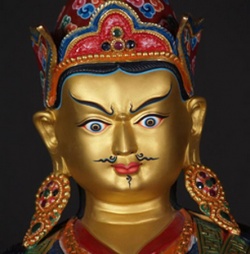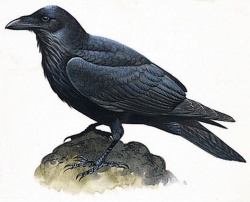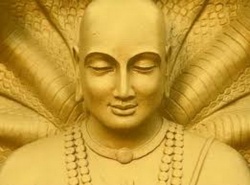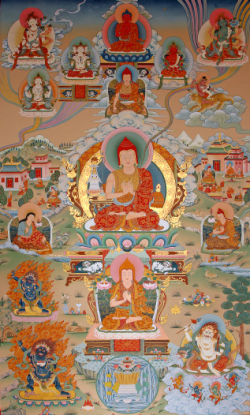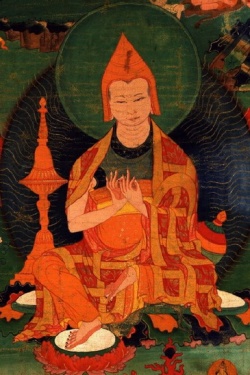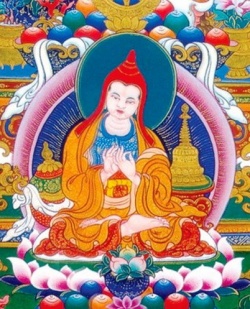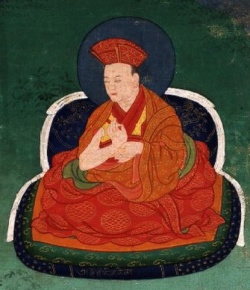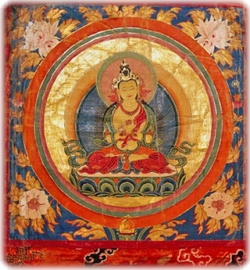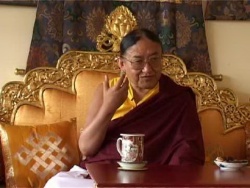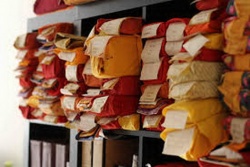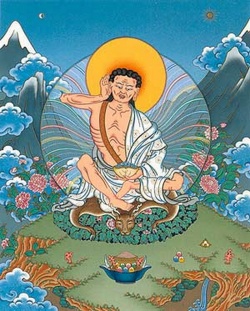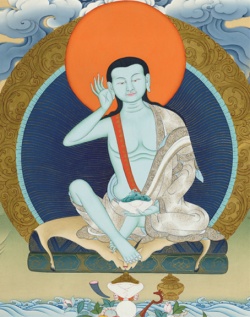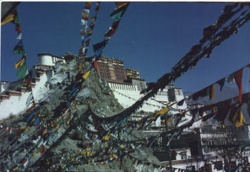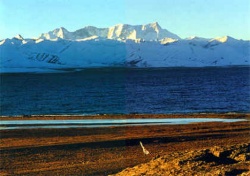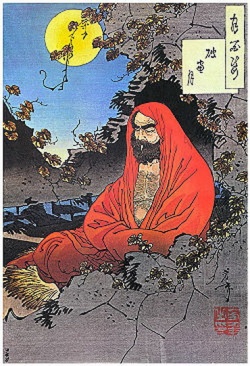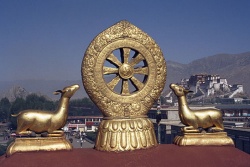The Eight Schools of Tibetan Buddhism by Chamgon Kenting Tai Situpa
Buddhism flourished in Tibet and many schools for the lineages have developed. It is like a trunk of a tree that has grown into many branches. There are eight major branches in Tibetan Buddhism. Everybody likes to say there are four schools in Tibetan Buddhism—Nyingma, Sakya, Kagyu and Gelugpa —but that is a very simplistic and lazy description. There are not four but eight schools, eight major lineages: Nyingma, Kadampa, Sakya, Marpa, Shangpa, Zhijed, Jordrug, and Dorje Nyendrub.
Nyingma Lineage
The first one is known as Nyingma. Until Atisha Dipamkara, who was from Bangladesh, until he came, all of Tibetan Buddhism is Nyingma, Nyingma means ‘old’. For example, an old bag can be called nyingpa, So Nyingma is the oldest school of Tibetan Buddhism, starting from Guru Rinpoche. Before Guru Rinpoche there were many generations, there was dharma, but from when Guru Rinpoche came to Tibet until Atisha Dipamkara came to Tibet, it is known as Nyingma.
During the time of Guru Rinpoche it was known as Nyingma Kama, Kama means command, so Guru Rinpoche’s teaching is known as Nyingma Kama. But after Guru Rinpoche left Tibet, all the teachings that derived after that are known as Nyingma Terma, so Kama and Terma.
Guru Rinpoche and his disciples put certain texts into hiding for later rediscovery, and they prophesized who was going to find what and when. According to those prophecies the texts were found and the lineage of transmission was received from Guru Rinpoche by those people. Guru Rinpoche is immortal, so you can receive transmission from him today, if you are prophesized and an enlightened person. So these people received direct transmissions from Guru Rinpoche and discovered hidden treasures, Termas. So Nyingma Terma means this, it means treasure.
Then the dharma is: dharmakaya is Kuntu Zangpoe and sambhogakaya is Vajrasattva. From these two Guru Rinpoche received transmissions. From Guru Rinpoche to all his disciples, such as Garab Dorje and others (there are twenty-five enlightened masters), all these are the Nyingma lineage. There are many things, but if you really look into it, it is summarised into two things. First is Dzogchen, which is the final and most profound teaching of Nyingma. It is about the nature of mind and the methods to realize the nature of mind. Dzogchen has many levels of practice. The second thing is, there are eight aspects of deity practice: body, speech, mind, knowledge, activity, wrathful, offering, and peaceful. The body is Manjushri-oriented, speech is lotus-oriented, mind is Yandak-oriented, knowledge is amrita-oriented, and activity is Vajrakilaya-oriented etc. These are eight aspects of the deity of the Nyingma lineage. Dzogchen and that somehow cover most of the Nyingma practice. But of course each of them have so many elaborated sub-practices.
Then there are six main seats for the Nyingmapas. In upper Tibet there are the two monasteries of Dorje Drak and Mindroling. In middle Tibet there are the two main monasteries of Shechen and Dzogchen. Then in lower Tibet the two main monasteries are Katok and Palyul. The head of Dorje Drak is Dor Drak Rinchen Chenpo, the head of Mindroling is Mindroling Trichen Rinpoche, the head of Shechen is Shechen Rabjam, the head of Dzogchen is Dzogchen Pema Rinchen, the head of Katok is Katok Shejong, and the head of Palyul is Palyul Urgyen. So these are the six main masters of the Nyingma lineage. But out of all of them, the supreme head of all of the Nyingma is His Holiness Minling Trichen Rinpoche (1931-2008), the hereditary successor of Minling Terchen, and head of Mindroling monastery. This post as hereditary is from father to son, he must marry and he must have a son and that son becomes the head of the Nyingma lineage. So, that is the Nyingmapa, one of the oldest lineages.
Kadampa Lineage
The second of the eight lineages is the Kadampa. Ka is command, dam means instruction. All the commands of the Buddha are instructions for the liberation of sentient beings. That is what Kadam means.
During the time of Muné Tsenpo, a son of Trisong Detsen, the Tibetan king who invited Guru Rinpoche to Tibet, he made a very special policy for Tibet; that there were to be no rich and no poor people, everybody was equal. That was his mission; he did not want any rich or poor people, everybody was to be equal. After Muné Tsenpo the throne was later passed to his brother Sadnaleg. He had a problem with his neck so he had a nick name, Jingön, ‘crooked neck’. His other name was Tsite Chenpo. When he became king, during his time, he built a very important temple called Kajung Gyalte. His son was Je Ralpacan (806- 841 A.D), who was a very devout king. When he invited monks to his palace he used to undo his hair and put it on the ground and make all the monks walk on his hair; he respected ordained sangha that much. He was also supposed to be an emanation of Vajrapani and prophesized in the White Lotus Sutra.
During that time five Indian abbots, Acharya Jinamitra, Surandrabodhi, Shri Dalandhabodhi, Danashila and Bodhimitra, and the Tibetan abbots Rinchen Sungwa and Chösum Tsultrim (Skt. Dharmashila), along with four Tibetan translators, Janasingha, Jnanarangshita, Manjushriwarma and Ratnashila, these main people under the patronage of king Ralpacan, who made his hair as a doormat for sangha to walk on, they translated most of the texts from Sanskrit into Tibetan. The old translations, which were not very clear, they retranslated and made them clearer. And the translations which were word for word translations and not clear, they made meaning translations of them. For example, in English when you say “how are you,” that doesn’t make any sense in Tibetan. It has to be translated into the Tibetan equivalent of ‘how are you’ rather than translating it exactly as ‘how - are - you’. In previous translations many texts were left as word for word translations. So when they were changed into meaning translations, what it meant in Sanskrit, the same meaning, was conveyed into the Tibetan language. Also at that time many of the texts that were very difficult to understand were made understandable.
At this time there were many problems between the neighbouring countries, there were fights and disputes, but they were settled and many treaties were written. Many of the treaties were written on stone pillars. The original greater Tibetan border is actually carved everywhere on stone. Orders were carved on stone, but I’m sure if the modern governments find them they will remove them, it’s very easy! From north to south all the Tibetan borders were marked with stone carvings, stone pillars and disputes were settled. Also many religious places were established. Unfortunately one of the ministers killed king Ralpacan, then his son, the crown prince, was expelled to the Tsang area. From the main capital to Tsang it is not very far, but they expelled him to there.
At that time there was a very important minister called Palgyi Yönten. He slandered about the queen and lamas being involved, so the lamas were killed and the queen killed herself. These things happened when king Ralpacan was very young, actually when his minister killed him he was only thrity-five years old. Actually they held him and twisted his head, it is said that his face was twisted backwards, they killed him that way.
Because the crown prince was expelled then the king’s older brother, known as Lang Darma (who was supposed to have had a horn growing on his head), became the king. Lang Darma was very bad and a total non-believer, he destroyed most of the monasteries and made monks and nuns disrobe. Quite a few very important masters escaped to Eastern Tibet, to Kham, and the king lost that part of Tibet. They resisted against him, they did not want to destroy the temples and go against the dharma. In central Tibet, Lang Darma, as the king, wanted to destroy everything. East Tibet was fighting with Central Tibet and these masters escaped to East Tibet with lots of dharma texts.
King Lang Darma threw the Buddha statue into a cellar and also dumped many of the Buddhist texts there. Nobody was allowed to read the texts and he also burned many of them. At that time there was a great master who was born in Lhalung, his name was Lhalung Palgyi Dorje. The king was reading stone carvings on a pillar in Lhasa; he had made some alteration and was reading it. Lhalung Palgyi Dorje wanted to kill him, because otherwise he would go on destroying everything. So Lhalung Palgyi Dorje—as he was prophesized and told from higher sources—created a big hat, which is called a black hat nowadays in lama-dances. Also he made a garment with very long sleeves, because one sleeve was to hide an arrow and the other sleeve to hide a bow. So a bow and arrow were hidden in the sleeves and he painted his horse totally black, and then he was dancing. The king was enjoying his dance while he was reading the stone carving in the pillar and then, in the middle of all of that, he shot the king in the head and killed him. Lhalung Palgyi Dorje then jumped on his horse and rode through the river Tsangpo, which washed all the black colour from his horse, so his horse became white. So he managed to escape on a white horse because everyone was looking for a guy on a black horse. Lhalung Palgyi Dorje was a great hero, even though he had to kill a person.
Lang Darma had a son called Ösung, ‘Protected by Light’. Because his father was so paranoid he wanted to protect his son twenty-four hours a day. So the whole night he wanted light to be in the room of his son with armed guards to protect him in the light.
Buddhism was revived again in the 10th century under king Khorre of Ngari. He developed an interest to re-establish the dharma in Tibet. He sent quite a few people to India to invite enlightened masters, but they didn’t really manage to find any. Many of the people he sent died, and those that came back came back empty handed. Finally one person, Döndrup Senge, met with Atisha Dipamkara.
After so many problems trying to find the right guru, finally one of the people he sent managed to find Atisha Dipamkara. But Atisha Dipamkara did not accept the invitation to come to Tibet. Then Lama Yeshe Ö, who had given the throne to his younger brother and became a monk, went to different parts of Tibet to find gold and take this gold to India to invite great masters, such as Atisha Dipamkara. He went to the Tibetan borders and on one of the borders, which was known as Kharlok, somewhere on the south-western side of Tibet, one of the tribes there captured him. They found out he was a Tibetan prince who had come to collect gold in order to go to India to invite great masters. When they found that out, they did not kill him but wrapped him in cloth and kept him like money. Then his brother’s son, Jangchub Ö, found out about this and returned with one hundred horsemen to save him. The Kharloks’ king told them to give the weight of the person in gold in exchange. They gave all the gold they had, but the weight of the head was lacking. Therefore they did not let him go and killed him. So Lama Yeshe Ö died searching for the dharma. But before that he told his cousin, who was sent for him, “Don’t do anything for me, there is nothing to do for me, take all this gold and invite Atisha Dipamkara to Tibet. You don’t have to save me. Take this gold and invite Atisha Dipamkara and let them kill me, it’s okay.” Then the Kharloks killed him. He died by being thrown into a pit filled with insects. The Kharloks threw him there and the insects ate him alive, which was their way of killing people. Before this happened he sent a message to Atisha Dipamkara, he said, “In my future life may I become your disciple. I died for it.”
When the Tibetans went to see Atisha Dipamkara with the gold, they told him the whole story. “For inviting you our prince went to search for gold and then these things happened and he died for it. Now please come to Tibet.” Then Atisha Dipamkara accepted and came to Tibet. He taught the view according to Madhyamaka, the action according to Vinaya, and the instructions according to the Bodhisattvas’ way. These teachings are known as Kadampa. Atisha had three main disciples: Khu, Ngog, and Drom. Khu was the incarnation of Manjushri, Ngog the incarnation of Vajrapani, and Drom the incarnation of Avalokiteshvara. Drom had three main disciples: Putowa Rinchen Sal, Chengawa Tsultrim Bar and Phuchungwa Shyönnu Gyaltsen. These six great masters were responsible for continuing the Kadam lineage, which was transmitted to Tibet by Atisha Dipamkara as the result of all this: the prince who gave up his life, the one who went to save him but did not manage to come back, and the king who then sent other messengers to bring Atisha to Tibet.
After these great masters, then Tsongkhapa, an incarnation of Manjushri, was born. When he was fifty-three years old he built Geden (Ganden) monastery, the main seat of the Gelugpa. Gelugpa by definition is the tradition of Geden. Ge means Geden monastery, luk means tradition, lineage. So the lineage of Geden monastery built by Tsongkhapa: Tsongkhapa, Dharma Rinchen, and Geleg Pelsang. In Gelugpa monasteries three masters sit there: the middle one is Tsongkhapa, the right one is Dharma Rinchen and the left one is Geleg Pelsang.
There is also Manjushri Zangpa Seven Lineage: Gyaltsab Je, Khedrub Je, Shalu Khepa Gyaltsen, Lodro Gyaltsen, Shogyi Gyaltsen, Shanpa Loden, Nyendrub Manang Pal. These are known as great lineage holders of the Gelugpa lineage, known as Manjushri Zangpa seven masters.
One of the direct disciples of Tsongkhapa, Jamyang Tashi Pelden, built Drepung monastery eight years after the construction of Ganden monastery. Then another disciple and great master, Jamchen Chöje Shakya Yeshe, built Sera monastery eleven years after the building of the previous monastery. Then the incarnation of Dromtönpa Gyalwe Jungne, one of the six mentioned earlier and born before Tsongkhapa, so Gendun Trup, built Tashi Lhunpo twenty-nine years after the construction of Ganden monastery. All the Dalai Lamas are incarnations of Gendun Trup.
Gendun Geleg Pelsang’s incarnation Sönam Tobje Langpo, his incarnations are known as the Panchen Lamas. They head the Tashi Lhunpo monastery. Then there are three other very great masters known as three incarnate masters of the Gelug lineage. So from there up until now it continued and spread to many places.
The original birthplace of Tsongkhapa was in Amdo. There they built Phumpo monastery, a very special monastery. When a baby is born, there is the placenta, which attaches the baby to the mother. When Tsongkhapa was born and this was cut and thrown away, where it was thrown a tree grew. This tree is there in Amdo, Phumpo monastery, and each one of the leaves of that tree has a Sanskrit or Tibetan character: OM, AH, HUNG etc. The tree is still there and the characters are naturally visible to anyone.
That is roughly about the Gelugpa lineage. Up until Tsongkhapa we call it Kadampa and after Tsongkhapa built Ganden monastery at the age of fifty-three then the Gelugpa started. But before that it was Kadampa and until that Tsongkhapa was a follower of Kadampa.
Lamdre/Sakyapa Lineage
The Sakyapa lineage was originally known as the Lamdre lineage. Lam means path, dre means result. This starts with the ‘descendent from heaven’. The father’s side we call ‘bone’ and the mother’s side we call ‘blood’. A particular bone descendent from heaven was known as ‘Khön’ bone. He had two brothers: one was Dorje and one was Rinchen. These two received direct transmission from Guru Padmasambhava in a very special way. From there until Khön Sherab Tsultrim there were ten generations: from father to son ten generations went by. So during that time the Khöns practiced Nyingma teachings, because they received transmissions from Guru Rinpoche.
All the generations had practiced the Nyingma lineage but Khön Sherab Tsultrim, the tenth generation, his younger brother, Könchok Gyalpo, became a disciple of Drogmi Lotsawa Shakya Yeshe. He became a great master of the later translations of Nyingma, instead of the earlier translations. When he was forty years old he built the Tsang Sakya monastery in the Tsang area. Sa means land and kya means grey, so the land is barren; there are no trees or grass, the land is like Ladakh. The name Sakya started because of the visual description of the land on which Könchok Gyalpo (the first Sakya Trizin) built the monastery. This was also prophesized by Atisha Dipamkara, who said that there will be seven incarnations of Manjushri and one incarnation of Vajrapani born on this grey land area. The prophesy was thus fulfilled when this happened.
Drogmi Lotsawa Shakya Yeshe was the master of Vinaya, Prajnaparamita and some of the tantras, which he received from great masters such as Shantipa and Viravajra. He received tantric teachings, Lam Khor Gu we call it, the Sakyapas main practice of tantra; nine main paths. The first one is Lamdre. Then in the second one, the main tantra is the Hevajra tantra, but there is visualisation which has nine stages and completion which has one stage, like subtle energy. The third is also based on tantra, but it is about the practice of bodhichitta. The fourth one is the same Hevajra tantra, but is about spontaneously arising visualisation practice. The fifth is about mudra yoga, which is based on one tantra called Yeshe Tigle. The sixth one is the tantra of great union. The seventh is the practice of Chakrasamvara. This has all aspects of outer, inner and secret practices. The eighth is based on Guyhasamaja, which originally does not have any written instructions. It is from master to disciple, from mouth to ear lineage. I don’t know how it is these days, but originally it was never written down. It is about Guyhasamaja Mahamudra. The ninth one is about mother tantra, the essence of mother tantra. This is known as ‘One that straightens which is not straight’. It is about nadis and bindus, to make straight that which is not straight, opening of the chakras etc. The great Indian mahasiddha from whom the Tibetan Lotsawas received these teachings came to Tibet three times, and the Sakyapa master Drogmi Lotsawa received it.
There is a simple way to describe these nine teachings. The first one is a simple way described as early Lamdre and all the other eight are later Lamdre, but it is actually the same thing; it is like preliminary Lamdre and the actual Lamdre or the preliminary Lamdre and later Lamdre. Lamdre means path and result.
One of the main masters of the Sakya lineage was Könchök Gyalpo’s son, Sachen Kunga Nyingpo, an incarnation of Vajrapani, who received transmissions from Bari Lotsawa, his main guru. He encountered Lord Manjushri in person and received direct transmissions from him. Also he attained high realization through receiving transmission from the great Indian master Virupa and himself became a great master. Of the five main figures of the Sakyapa lineage, three were not bhikkus and two were. Sachen Kunga Nyingpo had four sons: Kungabar, Sonam Tsemo, Jetsun Dakpa Gyaltsen and Palchen Wopa (the father of Sakya Pandita). Sonam Tsemo, Jetsun Dakpa Gyaltsen and Palchen Wopa remained as tantric practitioners, tantric yogis, they were not monks. Of course monks can also be tantric yogis. Anyway, Sachen Kunga Nyingpo and two of his sons, Sonam Tsemo and Jetsun Dakpa Gyaltsen, are known as ‘The Three White Ones’. Then ‘The Two Red Ones’, Sakya Pandita Kunga Gyaltsen and Drogön Chögyal Phagpa, the nephew of Sakya Pandita, means the two who became bhikkus, monks. All five of them make the five main figures of the Sakya lineage. The descendents of the Khön throne are the heads of the Sakya. Right now His Holiness Sakya Trizin is the descendent of the Khön. That is the Sakya lineage, briefly.
There is a lot more but time is flying and I don’t want to go into history tomorrow. I want to finish this history today! The Sakyapa actually has a few more branches: Sakya, Ngorpa and Tsarpa. The head of the Sakya is Sakya Trizin.
Ngorchen Kunga Zangpo founded the Ngor school, and established Ngor E-Vam monastery which was continued by the great master Muchen Sempa. This monastery has four main abbots known as Thartse, Luding, Khangsar and Phende. So this is known as Ngorpa. The Tsar school was founded by Tsarchen Losel Gyatso. His two foremost disciples were Khyentse Wangchug and Lhundrub Gyatso.
So the Sakya has three main lineages just like the Nyingma have six main monasteries and the Gelugpa have three main monasteries: Sera, Drepung and Ganden.
This way I think Sakya is roughly covered.
Kagyu Lineage
Ka means command, gyu means lineage, ‘The lineage of the command of the Buddha’. There are two lineages which hold the name Kagyu: one is the Shangpa Kagyu and the other is Marpa Kagyu. When we say eight lineages of Tibetan Buddhism it is: Nyingma, Kadam, Lamdre, Marpa Kagyu, Shangpa Kagyu, Zhijed, Jordrug, and Dorje Nyendrub.
Now I will talk about Marpa Kagyu. The great master Tilopa was a very important mahapandita and he finally achieved all the realizations as a mahapandita. Then he went into the stage of tantric transformation. In tantric practice he received four main transmissions of lineage from Sariapa, Nagarjuna Lvabapa, Sukhasiddhi, Indrabhuti and Matangi who were his main masters. All the transmissions that he received from them are the four streams of transmission; we call it Ka gi gyupa.7 This involves, Illusory Body, Clear Light, Guru Yoga, Bardo (intermediate state), Transferring of Consciousness, Tummo (practice of the bindu, heat), wisdom practice, the tantric transformation of negative samsaric duality into positive enlightenment, non-duality. Then drong jug which is another form of Phowa, which is to transfer consciousness from one state to another. Tilopa received all of these teachings and practiced twelve years in a very small place. He chained himself there so that he would not do anything else but practice. He was chained for twelve years and practiced all these sacred transmissions that he had received. Finally he attained realization and then received transmission directly from Buddha Vajradhara. There is a very long story—I wrote a whole book on this— which is about how he went through all the stages and finally attained realization.
These transmissions he transmitted to many disciples, but one of his main disciples was Naropa. Naropa, after many hardships, finally received the transmission and then he practiced and attained enlightenment equal to that of Tilopa. For example, Tilopa was practicing while as a servant for a lady who was selling wine and also involved in prostitution. She was a dakini, but externally she was involved in this. Tilopa was pounding sesame seeds to make oil for her. In the evening she sent her customers to him to take home and to bring new customers to her. He was doing all this as his practice, and finally, one day he attained realization. The next morning Tilopa was in the sky at a height seven times that of a tree known as tala in India, a date palm. He was singing songs to all the city—he was the servant of this woman, and the whole city attained realization. They all got enlightened because of his teaching from a height seven times that of a tala. It is said that if the head of a tala is cut it will never grow. Many Tibetans mistake a tala for a banana tree. But banana trees they always cut and they still grow. So it is not that, it is a date palm.
Naropa followed Tilopa and went through twelve main tests and hardships before Tilopa finally decided to teach him, and he then attained enlightenment. Then the Tibetan master Marpa Lotsawa went to India three times and spent twenty-one years in India, out of which exactly sixteen years and seven months he spent with Naropa and Maitripa, who were his main gurus. He had 108 gurus but his main gurus were Naropa and Maitripa. He spent time with them and received transmissions of fourteen main tantras, now known as the fourteen main tantras of the Marpa lineage, such as Hevajra, Guhyasamaja, Vajravarahi, Yamantaka, Mahamaya, Chakrasamvara etc. These tantras were received by Marpa, who practiced them, and finally brought them back to Tibet.
Marpa’s main disciple was Milarepa. Milarepa wanted to see Marpa, so he went all the way to Marpa’s village. When he got to the village there was a middle-aged man, a big man, ploughing the ground with oxen. Milarepa asked him, “Do you know Marpa?” He said, “Yes. Do you want to see him?” Milarepa said, “Yes.” So the man told him, “Wait here.” He had a container of wine and said, “Drink this, and I will go and call Marpa.” So Milarepa sat there and drank the wine. He finished it and was still sitting there, but no Marpa showed up. Finally Marpa’s wife came and took Milarepa in and the person who he had met on the hill, [who was actually Marpa), was sitting on the throne. That is how Milarepa met Marpa for the first time. Then Marpa gave him a very hard time; he purified all his bad karma, demolished his ego, and finally transmitted to him the lineage he had received from Naropa, Maitripa etc.
Another disciple of Marpa was Ngokton Chöje Dorje. Most of Marpa’s transmissions about practice were transmitted to Milarepa, and most about the intellectual teachings were transmitted to Ngokpa. So shepa and drupa; two lineages were transmitted to these two disciples. Of course Marpa had many other disciples also.
Milarepa’s main disciple was Gampopa, who was a monk. How he became a monk is interesting. He was a young and very handsome layperson with a very beautiful wife, but she got sick and was dying. She was in agony for days and months and she said to Gampopa, “I don’t want you to marry anybody else.” Finally he promised her that he would not marry again. Then she died and Gampopa got ordained and became a monk. He went to Milarepa and the first thing Milarepa did was… he had a kapala (skull-cup) with alcohol and he told Gampopa to drink it, in front of all the people. Gampopa was a monk and now he had to drink a kapala full of wine, so he felt a little bit strange. Then he thought, “It is my guru’s word.” So he drank it and not even a drop was left. Milarepa then decided, “This disciple can receive all the transmissions that I have.” It was a very auspicious sign that Gampopa was a worthy disciple for Milarepa. So Milarepa transmitted all his transmissions to Gampopa. Then finally Milarepa prophesized that Gampopa should build a temple in a certain place and described the shape of the mountain and all of that.
Milarepa had many disciples, such as Rechungpa, many men and women disciples, but the top, the most enlightened disciples of Milarepa were three men and four women and eight repas.
Two of the main disciples, whom Milarepa described as the son and moon, were Gampopa and Rechung Dorje Drakpa (Rechungpa). Gampopa was like the sun because his lineage was involved with great propagation and he was also an ordained bhikshu. Rechungpa was like the moon because his lineage was very precious and profound, but not that glorious like Gampopa’s, it went from mouth to ear. That way it did not spread like Gampopa’s lineage. So they were the two main disciples of Milarepa.
Gampopa had four main disciples from whom came what is known as the ‘four greater Kagyu lineages’, one of which is the Karma Kagyu, starting with the first Karmapa, who was born in the Teshö part of Kham in east Tibet, which was a small kingdom right next to the kingdom of Derge. He was born there and became a disciple of Gampopa. He received all the transmissions and as it was prophesized he established Tsurphu monastery. First there were small buildings in groups of five, which still stand, and later it became the seat of the Karmapas. All the followers of that lineage are known as Karma Kagyu. The other three greater lineages are the Phagmo Kagyu from Phagmo Drupa; the Barom Kagyu from Barom Darma Wangchuk, and; from Zhang Tsalpa Tsondu Dakpa, a student of one of Gampopa’s main disciples Ongom Tsultrim Nyingpo, the Tsalpa Kagyu. These four lineages are known as the greater Kagyu because they are from the direct disciples of Gampopa.
Out of the four main disciples Phagmo Drupa had eight main disciples, from which came those known as the eight lesser Kagyus, not because they are lesser, but because they are the disciples of the disciple of Gampopa. So from Phagmo Drupa came the Drikhung Kagyu, Lingre Kagyu, Taklung Kagyu, Yasang Kagyu, Trophu Kagyu, Shuksep Kagyu, Yelpa Kagyu and Martsang Kagyu schools. The Lingre Kagyu is now known as the Drukpa Kagyu; originally it was Lingre Kagyu but now it is called Drukpa Kagyu. These are the eight sub lineages of the Kagyupa and under the Karma Kagyu there are Surmang Kagyu, Nyendo Kagyu and Gyaltön Kagyu, three sub lineages which have developed further. All these lineages that developed, like a tree into branches, they are not something that got split because people did not get along. It was according to the prophesy of the master: the disciples spread the lineage and it has its own identity.
Then there were three main seats for the Karma Kagyu, but over the years these three main seats were all interrupted because of Ghenghis Khan, Kublai Khan and all those episodes. Then the Karma Kagyu lineage had two seats: Tsurphu and Palpung. Tsurphu is like Ganden monastery for the Gelugpa, where the regent of Tsongkhapa is the Ganden Tripa, the head of the Gelugpa is the Ganden Tripa, not the Dalai Lama. Many people have this strange misconception that His Holiness Dalai Lama is the head of the Gelugpa, which is not true. His Holiness Dalai Lama is the temporal and spiritual head of Tibet and all of greater Tibet. But the head of the Gelugpa is the Ganden Tripa, which is by graduation, not incarnation. He starts as an ordinary monk and goes all the way; he goes through all the stages and finally becomes the Ganden Tripa. The present Ganden Tripa is the 101st or 102nd Ganden Tripa. So it is by graduation.
The Karmapa is the head of the Karma Kagyu—actually the Karmapa in Tibet is respected by all the schools as well as the head of all of the Kagyu, because out of the four schools (Nyingma, Sakya, Kagyu and Gelugpa) which we have right now, the Karmapa is the only one who is by incarnation. The Nyingma and Sakya are by heritage and Gelug is by graduation, but Kagyu is by incarnation. The Karmapa leaves a written instruction and according to that the next Karmapa is found. Although in Tibetan Buddhism we believe everybody dies and is born life after life, the master dies and re-incarnates and has the same name and continues the activity started from the first Karmapa. Until the first Karmapa prophesized his incarnation and the second Karmapa was found there was no such thing as a reincarnate lama. But later, the reincarnated masters traced back their sources. For example, Tai Situpa, the first Tai Situ title started in 1407, but the previous incarnations in Tibet trace back until Lord Marpa. From there it traces back to India as Dombi Heruka, one of the eighty-four mahasiddhas, then from there to Guru Padmasambhava and to Lord Maitreya etc.
Many of the reincarnations in Tibet count all of that, so they say they are the twenty-sixth incarnation, the thirtieth incarnation, the fortieth incarnation, but actually, truly, the counting should be from when the first incarnation is recognised as an incarnation of somebody, is enthroned and takes the seat of the predecessor. It should start from there. That way, I myself am the twelfth Tai Situ. Otherwise I can call myself the fiftieth Tai Situ, but that’s not correct.
Anyway, the Karma Kagyu has two main seats: Tsurphu, the Karmapas seat, like Ganden monastery and Palpung, which is like Sera, Drepung and all the others. Palpung, is my seat. In Tibet Palpung monastery had 13 monastic estates and 180 monastic branches all over greater Tibet. That is what I am, and all the things that I have been doing since I was eighteen months old until now is to try to catch up and uphold all the things that the previous Tai Situs have done. Whether somebody understands it or not, misunderstands it or not, likes it or not, agrees with it or not, there is nothing I can do. If they don’t like me doing my job then they’d better shoot me. Really, there is no other way to stop it. So that is the Karma Kagyu Lineage.
Shangpa Kagyu Lineage
During the time of Marpa there was another master known as Khyungpo Naljor from a place in Tibet called Shang-Shung. In the beginning he was a Bönpo, not a Buddhist, but a Buddhist type of Bönpo, which we have in Simhla, that type of Bönpo. It is very much Buddhist. Then he became Nyingma, but finally he went to India and he met with the sister of Naropa, Niguma, a great enlightened mahasiddha. Then he met another great enlightened lady master called Sukhasiddhi. From these two enlightened mahasiddha women, another thirteen great masters, four root masters and 150 enlightened and learned masters, he received transmissions.
Mainly he received five tantric transmissions. Marpa received fourteen. The five Khungpo Naljor received were: Hevajra, Chakrasamvara, Guyhasamaja, Mahamaya and Yamataka. These five are the main tantras and all the practices are similar to the Marpa Kagyu, which are the Six Yogas, but all are based on these five tantras. Khedrup Khungpo Naljor brought these from India to Tibet and established his seat in the Shang area, called Shang-Shung, and therefore his lineage became known as the Shangpa Kagyu. He lived until a very old age, 150 years old. In the history of Tibetan Buddhism he is one of the masters who lived the oldest.
This lineage is very rich actually; it has so many great masters and many branches, it really flourished. But a few hundred years ago everything fell apart and the Shangpa Kagyu was almost finished. But then, at that time, the ninth Tai Situ discovered a young boy who was serving as a secretary to one of the head ministers of the king of Derge. He told this minister, “I want to bring your secretary up, he is a great person, he is not just a young boy.” So he took him and gave him transmissions and named him Jamgon Kongtrul Lodro Thaye.
Jamgon Kongtrul Lodro Thaye became one of the most important renaissance masters of Tibetan Buddhism. His seat was Palpung monastery, my monastery, which has Jamgon Kongtrul, Jamyang Khyentse, and a few of the Öntruls as the main Rinpoches. Then later quite a few other Rinpoches also resided at Palpung monastery, such as Thutop Tulku, Gungri Tulku etc. Originally Tai Situ, then later Jamgon Kongtrul, Jamyang Khyentse and others also resided there.
During the time of Jamgon Kongtrul Lodro Thaye he revived the Shangpa Kagyu lineage. Otherwise it would have been gone. In Palpung monastery there were three main retreats: the upper retreat, which was the residence of Jamgon Kongtrul Lodro Thaye, that is the Shangpa Kagyu retreat; the middle retreat, which was my summer home, in summer I stayed there, that is the Marpa Kagyu lineage, the Six Yogas of Naropa etc.; then the lower retreat, which was Jamyang Khyentse Wangpo’s. They practiced many other practices there, and also did short retreats, like one year and six month retreats etc.
The main administration of the Palpung Labrang was established by the eighth Tai Situ. Up until the time of the eighth Tai Situ the seat of the Tai Situs was in Karma Gön, which is very close to Chamdo, in central Tibet. When the eighth Situ was born, around that time Gyalwa Kelsang Gyatso, the seventh Dalai Lama, was born and Kelsang Gyatso had some difficulties residing in Lhasa, so he resided in Kham and during that time the king of Derge and the eighth Tai Situpa served him. I have it written in brocade in very big letters: “From the beginning until now, the unchanged descendent of the king of Derge and his guru served me well when I was young, and this should never be forgotten.” His seal, Kelsang Gyatso’s, is there.
Anyway, during that time the king of Derge did not want the eighth Tai Situ to go and reside in Karma Gön. He said, “This is a precious jewel born in my country, I want to offer him half my kingdom, half of the sky and earth. I want him to settle in my kingdom.” So that is how Palpung monastery was established. All the branches of Palpung monastery developed from there, including the Karma Gön monastery and its branches, which were originally there.
Karma Kagyu and Shangpa Kagyu right now are almost one. The Shangpa Kagyu’s lineage masters were Kalu Rinpoche and Bokar Rinpoche. The previous Kalu Rinpoche did three-year retreats at Palpung monastery in both Shangpa Kagyu as well as Marpa Kagyu. The eleventh Tai Situ then appointed him as the retreat master of both the Shangpa Kagyu and Marpa Kagyu retreat centres. When we lost our country and when we all became refugees, Kalu Rinpoche was at a very good age, so he was able to establish a three-year retreat in Rewalsar, in Dalhousie, Sonada, in Darjeeling, then in Europe and America, Canada, in many places. Now there are more than a thousand people in Europe and America, more than a thousand Europeans and Americans, who have completed a three-year-retreat. The credit for this very much goes to Kalu Rinpoche. In the west there are dharma establishments started by Kalu Rinpoche, Chögyam Trungpa and Akong Rinpoche. These three established the dharma there and many others followed afterwards, but before that there was very little Vajrayana Buddhism there, maybe only in universities, some curriculum. Then Madame Blavatsky from the Theosophical Society had some things about Vajrayana Buddhism, but you know, I would not dance with her, she is great but I think very scary! She is like Queen Victoria, if Queen Victoria ever had that energy.
Anyway, that’s the Shangpa Kagyu lineage and now that is the Kagyu.
Zhijed Lineage
Zhi means pacifying, jed is a grammatical word (it means do): the pacifier, zhiwar jepar, pacifier. Everybody knows Zhijed from Chöd practice. This is based on Prajnaparamita. So what does it do? The practice of the paramitas will pacify all the defilements, the suffering of samsara. This comes from the great master Kamalashila, who received transmission from many great masters but especially fifty-four great enlightened masters and put the practice of this altogether. This lineage went to Tibet five times as well as to China. Kamalashila, known in Tibet as Padampa Sangye, is known in China as Dhamo. He is depicted with bushy hair, bushy eyebrows, and big eyes. Some also call him Bodhidharma. He was a great Indian prince, a highly enlightened master, a practitioner of the Prajnaparamita practice, but everybody called him Padampa Sangye and Bodhidharma.
He came to Tibet the first time through Tsari, which is in Aruna Tsa Pradesh. He then came to Kham . The second time he came from Kashmir through Northern Tibet, the Kailash area. The third time he came through Nepal and went into Tsang. The fourth time he came through Shoutago to Central Tibet. The fifth time was from China, where he had taught dharma for twelve years. The Shaolin temple and Shaolin kung-fu tradition all are descendent of the lineage of his teaching. That is based on Prajnaparamita and Chöd.
In Chöd practice we make very strong PHET sounds, in kung-fu they say ahhu! It is very similar, just different countries and cultures which somehow transform this into all kinds of ways. But definitely there is force, and to implement force you have to be forceful. The bigger the cannon the louder the noise and the further the ammunition goes, so we have lots of cannons, generals and admirals and brigades here, you all know this, it has to make noise, really shout it. Chöd is based on this, and the lineage in Tibet is… actually there are so many great masters but the two main masters are Padampa Sangye and Machik Lapkyi Dronma, who was a Tibetan lady from the Lap area, an enlightened Tibetan master of the Chöd lineage.
From Padampa Sangye’s last visit to Tibet, the third transmission lineage, during that time he had many accomplished disciples, but there were forty-nine special enlightened disciples and twenty-four enlightened female disciples. Through these disciples the great transmissions continue today, which are sometimes known as the ‘Four Yogis of the Four Directions’. The twenty-five male masters are described as, ‘whose illusions fell apart’. They have no more illusions. One was called Chokro Nyunpa, ‘Crazy Chokro’. Chokro was his family name and nyunpa means crazy. He is described as crazy because if you have no more illusion, you don’t care. Then other people who do care so much will call you ‘crazy’. So including him, there were twenty-five of them. Then Tsomo Sangye was one of the twenty-four enlightened female masters of the Chöd lineage. Chöd is practiced now by everybody so today there is no one organisation or one denomination known as the Zhijed. It is in everything, we practice Chöd, and so many people practice it. So the Zhijed lineage is alive but it doesn’t have its own organised religious structure.
Jonangpa/Jordrug Lineage
Jonangpa is also known as Jordrug, six aspects of implementation (Jorwa means something like implementation or application, and drug means six). The Jordrug lineage is actually the practice of Kalachakra, it is based on the Kalachakra tantra, which was transmitted by Buddha to the king of Shambhala. Kalachakra and all its related lineages are protected in Shambhala because this world is going to be occupied by barbarians in the next 300 years. There are two different calculations: one has one zero less and one has one zero more. So in 30 or 300 years this whole world will be occupied by barbarians. That means this world will have no place or anybody except them. Whoever those barbarians are, they are going to dominate this world. It is not the end of the world, but this idea, this religion, this philosophy, this way of life, will be imposed on every human being on this planet Earth. So there is no room for anybody else.
And these barbarians will succeed, they will manage that. If one of the predictions is right then it will be in 30 years, or if the other one is right it will be in 300 years. The world will be totally influenced by them. When that happens, then the last, the twenty-fifth king of Shambhala, who will be ninety-nine years old, will conquer the Earth and bring the Kalachakra teachings to Earth, and he will make this Earth a heaven on Earth. That unification and positiveness will remain for 500 years and this 500 years will be the renaissance period for humanity on Earth. After 500 years then again everything will change and go back to something like what we have now.
This lineage, known as Jordrug, is sometimes known as Jonangpa because one of the Tibetan masters who transmitted this lineage in Tibet was called Jonangpa Taranatha. This lineage is now dissolved into everything. His Holiness Dalai Lama gives Kalachakra initiation from this lineage and we also practice the Kalachakra from this lineage, the Jordrug.
Now the Jonangpa lineage is trying to revive its identity, by itself. This is under the instruction of His Holiness Dalai Lama; that the Jonangpa lineage is trying to revive itself. It wouldn’t take very much, because all the teachings are there and all the lineage is there. So they have to receive it and practice it and pull themselves together, and pull their acts together. Then they will have an identity.
Dorje Nyendrub
Now Dorje Sumgyi Nyendrub, which means the practice of the three vajras: the body vajra, speech vajra, and mind vajra. Actually one of the great masters, Druptop Orgyenpa, during the time of the third Karmapa Rangjung Dorje, about 800 or 900 years ago, the lineage which was continued by him is known as Orgyen Nyendrub. Orgyenpa was his name and Nyendrub is the practice. This is very much based on the practice of yoga. It involves breathing (pranayama), physical exercises, visualisation, all kinds of tantric yoga practices and exercises. This lineage is also somehow dissolved into everyone. There are four main masters in this lineage: Rinchen Pal, Shangtön, Kuntön Nyendowa and Bota Sönäm Öser, but this lineage does not stand on its own as another organized lineage. It is mixed with everyone.
So these are the eight major lineages of Tibetan Buddhism. This definitely does not complete the Tibetan Buddhist history, but I hope it is somewhat informative so that you now know a little bit more than you knew before.
Source
With thanks to Ani Sherab for transcribing and editing.
This teaching by Kenting Tai Situpa is from the April 2009 issue of Thar Lam, the tri-annual journal available from Palpung Zhyisil Chokyi Ghatsal Publications: http://www.greatliberation.org/shop/tharlam.html
© Copyright Palpung Zhyisil Chokyi Ghatsal Publications
multimedia.getresponse.com/
